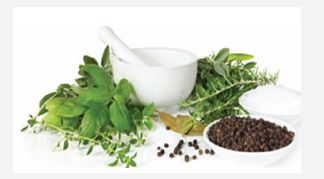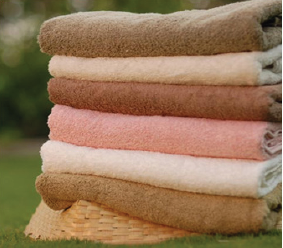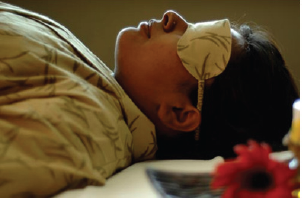- Submissions

Full Text
Trends in Textile Engineering & Fashion Technology
Ayurvastra: A Way to Sustainable Living
Aggarwal R*
National Institute of Fashion Technology, India
*Corresponding author: Aggarwal R, National Institute of Fashion Technology, India
Submission: December 12, 2017;Published: January 04, 2018

ISSN: 2578-0271 Volume1 Issue1
Opinion
Textile industry has become somewhat conscious about its negative contribution to the environment pollution through the textile chemicals uses in its various manufacturing processes. Environmental friendly fibers such as organic cotton and recycled polyester have become popular among the fabrics and apparel manufacturers. However, after these fabrics or the finished garments are manufactured, they have to be dyed in the same chemical dyes that are so harmful to the environment.
Apart from growing cotton, dyeing is a major area of concern for people who have chemical sensitivities. Garment finishing techniques like wrinkle free, and non-shrink may also be harmful for people with sensitive skin. They may cause nausea, breathing difficulties, seizures etc. Herbal dyeing is one step ahead of organic life style. It supports the core concept of organic to eliminate the impact of harmful chemicals and pesticides. It avoids many ailments that are common with conventional clothing. Herbal Textile is a perfect amalgamation of cloth and wellness; this unique fabric incorporates in itself the rich Indian culture with health benefits.
The concept of herbal textile
When the textile is dyed with the extractions obtained from various herbs, they are referred to as Herbal Textile. When the dyeing is done with herbal extractions, no chemicals are used in its dyeing process. Whereas, some chemicals such as copper sulphate and ferrous sulphate are used as catalysts when dyeing is done with vegetable dyes. So, herbal dyes are different from vegetable dyes as it also carry some or the other medicinal value [1].
The concept of herbal textiles is derived from Ayurvastra, which is a branch of Ayurveda, the ancient 5,000 year old Indian system of Vedic healthcare. Loosely translated, "ayur" is Sanskrit for health, "veda" means wisdom, and "vastra" is cloth or clothing. Ayurvastra clothing is made from organic cotton fabric that has been permeated with special herbs and oils that promote health and cure special diseases depending upon the blends of embedded herbs and oils.
Ayurvastra cloth was used since long time in the treatment of a broad range of diseases such as diabetes, skin infections, eczema, psoriasis, hypertension and high blood pressure, asthma, arthritis, rheumatism, and even some forms of cancer. Ayurvastra clothing is believed to help restore balance within the body's systems and strengthen the immune system [2,3].
The process
The process of producing herbal textiles begins with 100% organic cotton yarn/fabric and every step in the preparation of herbal cloth and clothing is carefully and precisely controlland no chemical process is adopted while dyeing and processing the fabric. The bleaching of cloth is done naturally by exposing it to sunlight on a natural grass base and by use of animal manure.
The organic cotton yarn or fabric is dyed in a carefully controlled mixture of herbal dyes depending upon the disease or ailment being treated. The dyes used for dyeing herbal clothing comes by blending and carefully preparing different medicinal herbs, plants, flowers, roots and barks (Figure 1). The temperatures of the dyes, the duration and number of the dye soaks, the blend of herbs, and even the equipment used are carefully controlled. These herbs are applied directly to the fabric with the help of natural ingredients, so that the medicinal value of the herbs can be kept intact [4].
Figure 1

The herbs used are different from vegetable dyes as they are not only natural but also have medicinal value. All kinds of shades of red, yellow, brown, orange and green etc. can be prepared with the help of these herbs. To make the colors bright and fast natural mordents such as, Myrballams, rubhabs leaves, oils, minerals, alum, iron vat etc are used instead of heavy metal mordents like copper, chrome, zinc, tin etc. The finishing process used after Herbal Dyeing is also organic and is given by sprinkling pure water on the cloth and then stretching under pressure, using hand rolls, aloe Vera, castor oil etc. During this entire treatment only natural processes are used and the fabrics & yarns on which herbal dyes can be used are organic cotton, natural cotton, silk, wool, linen, jute, hemp etc. and their natural blends (Figure 2).
Figure 2

The healing touch of herbal textiles: The healing value of herbal clothing and its usage is based on the principle of touch. By coming in contact with herbal cloth, the body loses toxins and its metabolism is enhanced. Herbal Textile helps in fighting many common and prevalent diseases such as hypertension, heart ailments, asthma and diabetes. For diabetes, mimosa pudica (touch-me-not), cumon/cumin seeds, champa flower and shoe flower (hudahal) are combined in the herbal dye. The main herbs used in the herbal dye for arthritis are curry leaves and apocynceae [5]. Whereas, for skin diseases, the herbs used are turmeric, neem, indigo and sandalwood. Cuscus grass is good for asthma patients, Sandalwood; with its mild fragrance has a soothing effect that helps in fighting stress. Rubia Cordifolia, Majith are known to be effective against diseases like Leprosy. Katha, Catechu is used for treatment of parasitic Infestation and itching. Some of the other herbal dyes used are catechu, pomegranate rind, madder, castor oil, sweet basil, lime, wild turmeric, henna leaves, curry leaf tree, aloe vera, certain herbal fruits, etc. each having their own healing effects.
The most effective time to wear herbal clothing is when the body is most at rest such as during sleep or meditation because this is when the body is naturally healing and reestablishing balance. Skin is recognized as being the body's largest organ. The skin can act as a barrier but also as a conduit for outside substances to enter the body. Many environmental toxins and chemicals in conventional clothing are assimilated into the body through the skin. Anything which can improve the skin's natural ability to block and resist harmful chemicals and toxins from entering the body will be beneficial to health. Keeping this in mind, herbal textile is often used in making bed coverings, undergarments, towels, meditation clothes, sleepwear, and other such garments that stay close to human skin so that all its benefits could be absorbed through the skin. The technique for producing herbal textiles is also used for floor coverings and coir mats. For coir mats, the fibers are first soaked in herbal dyes and then woven into coir mats.
There is increasing demand for herbal textile within our country also. But this industry needs strong motivation from Government end to survive the competitions from regular cloth. Another point favorable for this herbal textile is their affordability. The lower cost production keeps the price of these textiles low.
Figure 3


The Handloom Weavers’ Development Society in India is producing a wide range of herbal fabrics including sarees, bed sheets and dress materials using medicinal dyes, and exporting them to the US, Italy, Germany, UK, Singapore, Taiwan, Malaysia, Jordan and Saudi Arabia. National government ministries and state governments within India see herbal clothing as a way to revitalize and increase the market for their handloom industries and to create a niche for their eco-friendly handloom fabrics (Figure 3).
The herbs do not pollute the environment through contamination of water resources in areas close to processing units. Moreover, the solid residue left after dyeing can also be used for the purpose of recycling, where, solid and liquid waste is separated through the process of filtration and used for farming purposes as manure & watering the fields. Herbal clothes are completely free of synthetic chemicals and toxic irritants and are totally organic, sustainable and biodegradable. This age old practice emphasizes the importance of an environmentally friendly way of living, and sustaining the world in a virtuous way for the forthcoming generations.
References
- www.auraherbalwear.com
- www.redyellowexports.com/wb/pages/home.php
- www.hometextilelive.com/aura/
- http://www.ayurvastraonline.com
- http://www.ayurvastra.in
© 2018 Aggarwal R. This is an open access article distributed under the terms of the Creative Commons Attribution License , which permits unrestricted use, distribution, and build upon your work non-commercially.
 a Creative Commons Attribution 4.0 International License. Based on a work at www.crimsonpublishers.com.
Best viewed in
a Creative Commons Attribution 4.0 International License. Based on a work at www.crimsonpublishers.com.
Best viewed in 







.jpg)






























 Editorial Board Registrations
Editorial Board Registrations Submit your Article
Submit your Article Refer a Friend
Refer a Friend Advertise With Us
Advertise With Us
.jpg)






.jpg)














.bmp)
.jpg)
.png)
.jpg)










.jpg)






.png)

.png)



.png)






